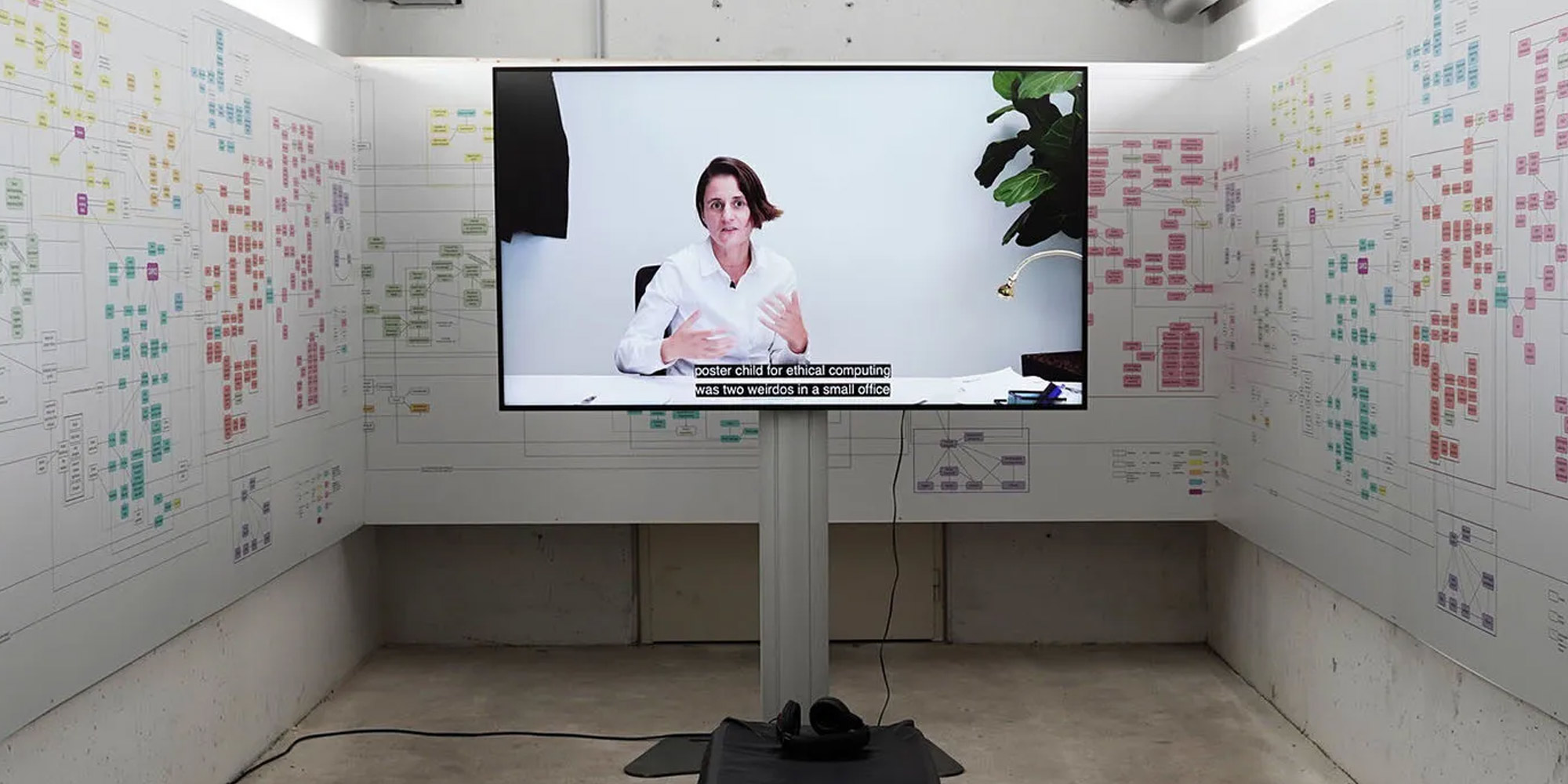We look back to one more year of the ArtScience Residency that was made possible through the support of the Art Collection Deutsche Telekom.
We, as Ars Electronica, are very excited that we were able to work with the Art Collection Deutsche Telekom team on supporting emerging media artists form Eastern- and Southeastern Europe. Let’s discover here what the 2023 winner Špela Petrič was working on and check out the short video documentary before we recap the year in the blog post below:
In late 2022 Špela started her exchange with science partner and Professor for Applied Ethics of AI, Aimee van Wynsberghe of the Bonn Sustainable AI Lab. With Špela’s artistic research practice in the field of automation of care she directed her residency project towards robotics and AI in the healthcare sector which is a research focus of Aimee too. She wrote the book Healthcare Robots: Ethics, Design, and Implementation and looks into questions around Applied Ethics of Artificial Intelligence. Click, the two connected through their highly engaged interest in these pressing questions behind AI and its potentials as well as ambivalences.

This was the beginning of an ongoing exchange. Aimee was able to introduce Špela to Dr. Jan Arensmeyer from the General, Visceral-, Thoracic and Vascular Surgery Department at the University hospital Bonn. The hospital had just obtained a new surgical robot named Dexter, made by the Swiss company Distalmotion. While the robot was still in the demonstration room, the artist team was able to organize a performative ethnography to encounter it.
Performative ethnographies is the name of the methodology that Špela designed for her investigations of the automation of care. Špela invites a group of 10-15 people to join an expedition to hospitals. The participants are introduced to the spaces, technologies and activities through expert guides, but also by being able to touch and use the robot Dexter, for example, or have a video-call with a cardiac electrophysiologist while they are performing a routine surgery for cardiac arrhythmia. In this way, the participants become amateur ethnographers and are invited to look at the input through lenses, which they choose for themselves. Sometimes the participants observe from positions of people, such as a YouTuber, teacher or child, and sometimes objects, concepts or processes, such as an AI, an ECG cable or the heart of the surgeon performing surgery on the heart of a patient. During the participatory performance, the participants are invited to ask the expert guides questions. The event concludes by collecting the amateur ethnographers‘ observations and fieldnotes in the form of a video statement.
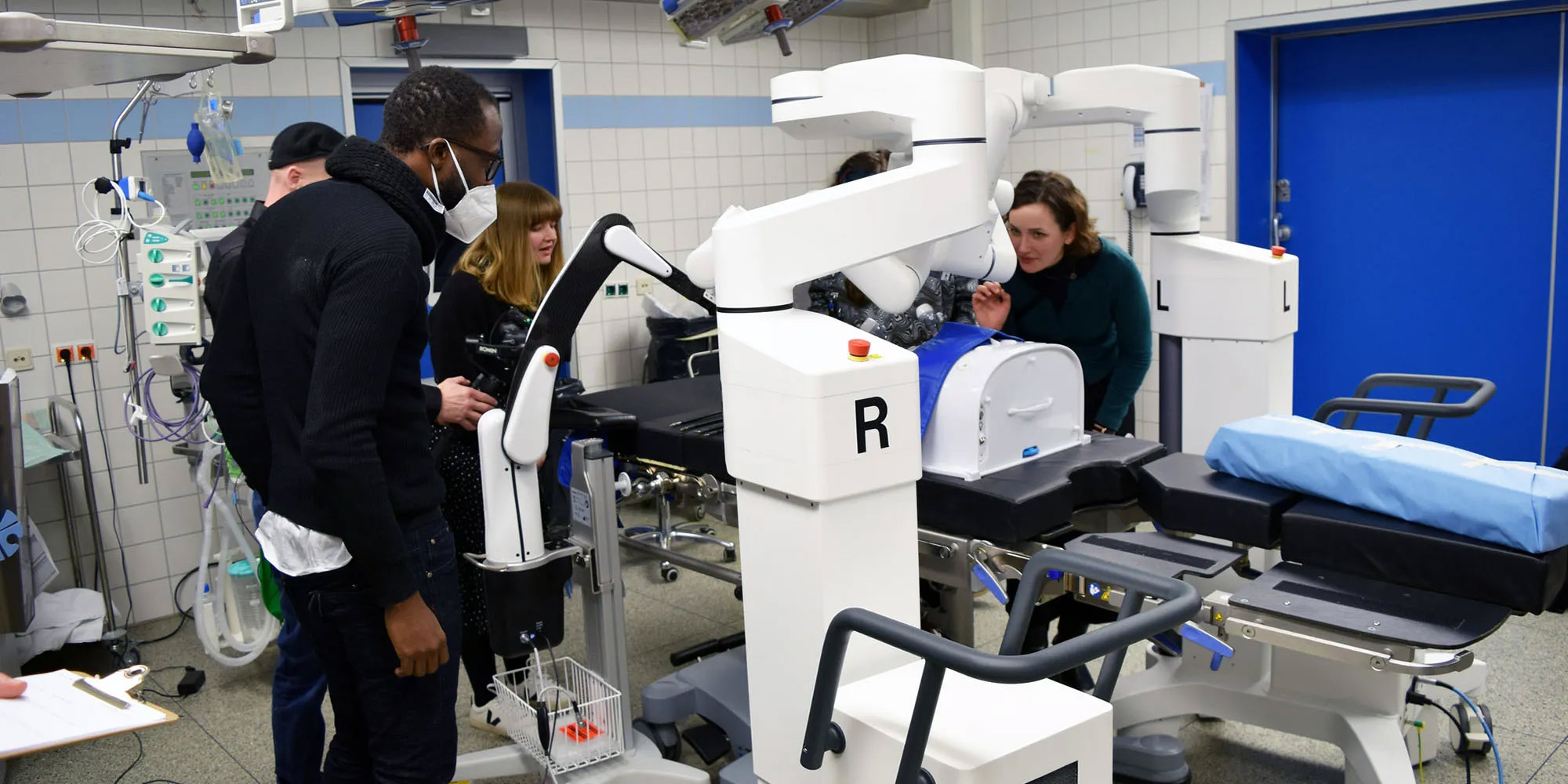
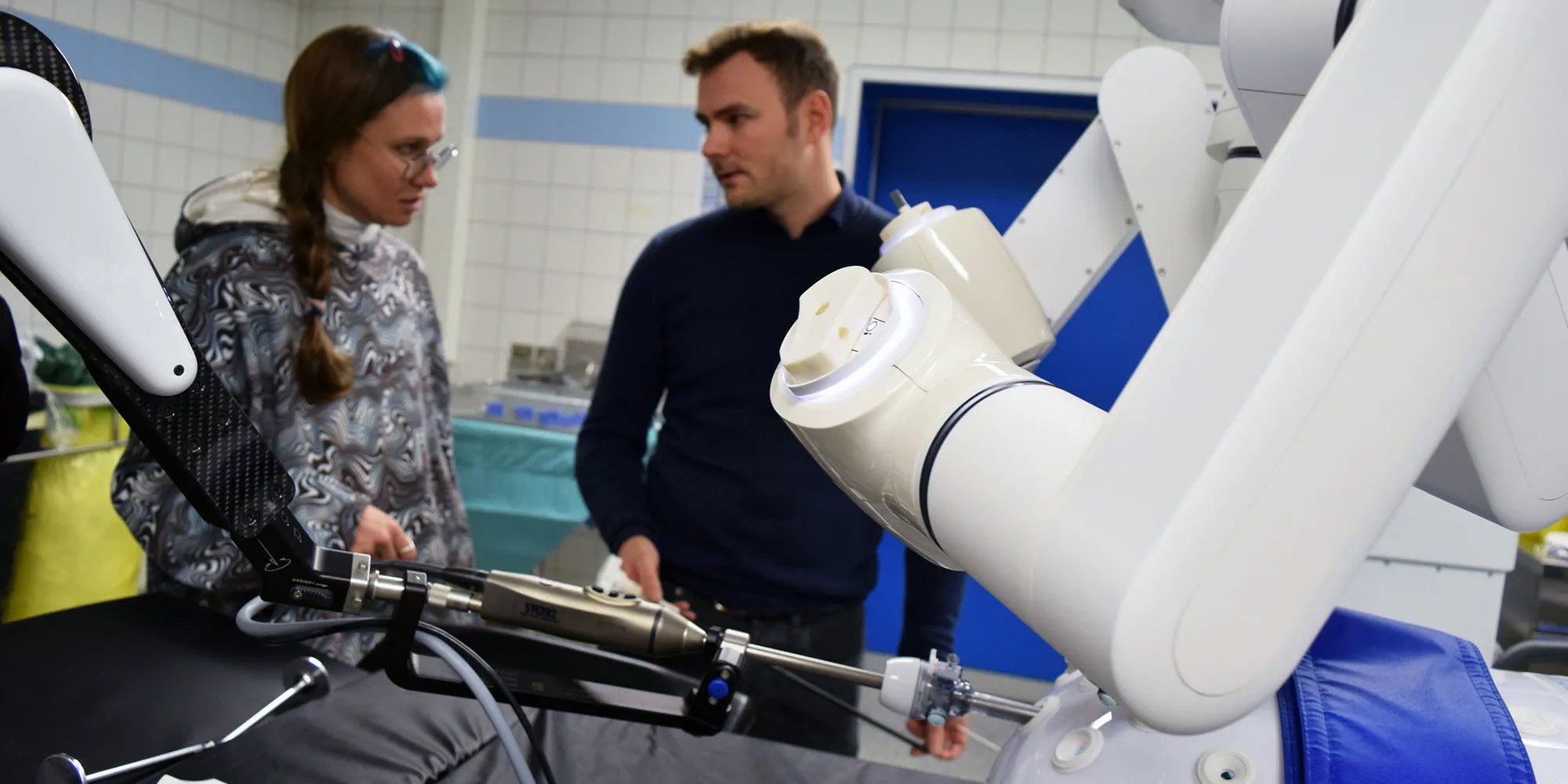

At the same time Špela was able to bring another partner on board, namely ELSA AI Lab Northern Netherlands with their research on emerging AI applications in the field of healthcare, namely on the use of AI in DNA screening of newborns for metabolic diseases and the use of AI-generated synthetic data in medical imaging. A performative ethnography was carried out at the Genetics Department of the University Medical Center in Groningen, NL.
Last but not least, Laura, Head of Ars Electronica Export, could gain the interest of Dr. Prof. Pürerfellner, Head of rhythmology and cardiac electrophysiology of the Hospital Ordensklinikum Linz Elisabethinen. Voila, three hospitals or research facilities opened their doors for an artistic exploration of addressing the challenging questions behind the automation of care work.



The goal is two-sided: The participants, and thereby the general public will encounter the complexity of the mechanisms behind this research field as well as technological development on the one hand. On the other hand, it is also a unique opportunity for the doctors and researchers to get insights from the general public. Usually, these two elements do not meet.
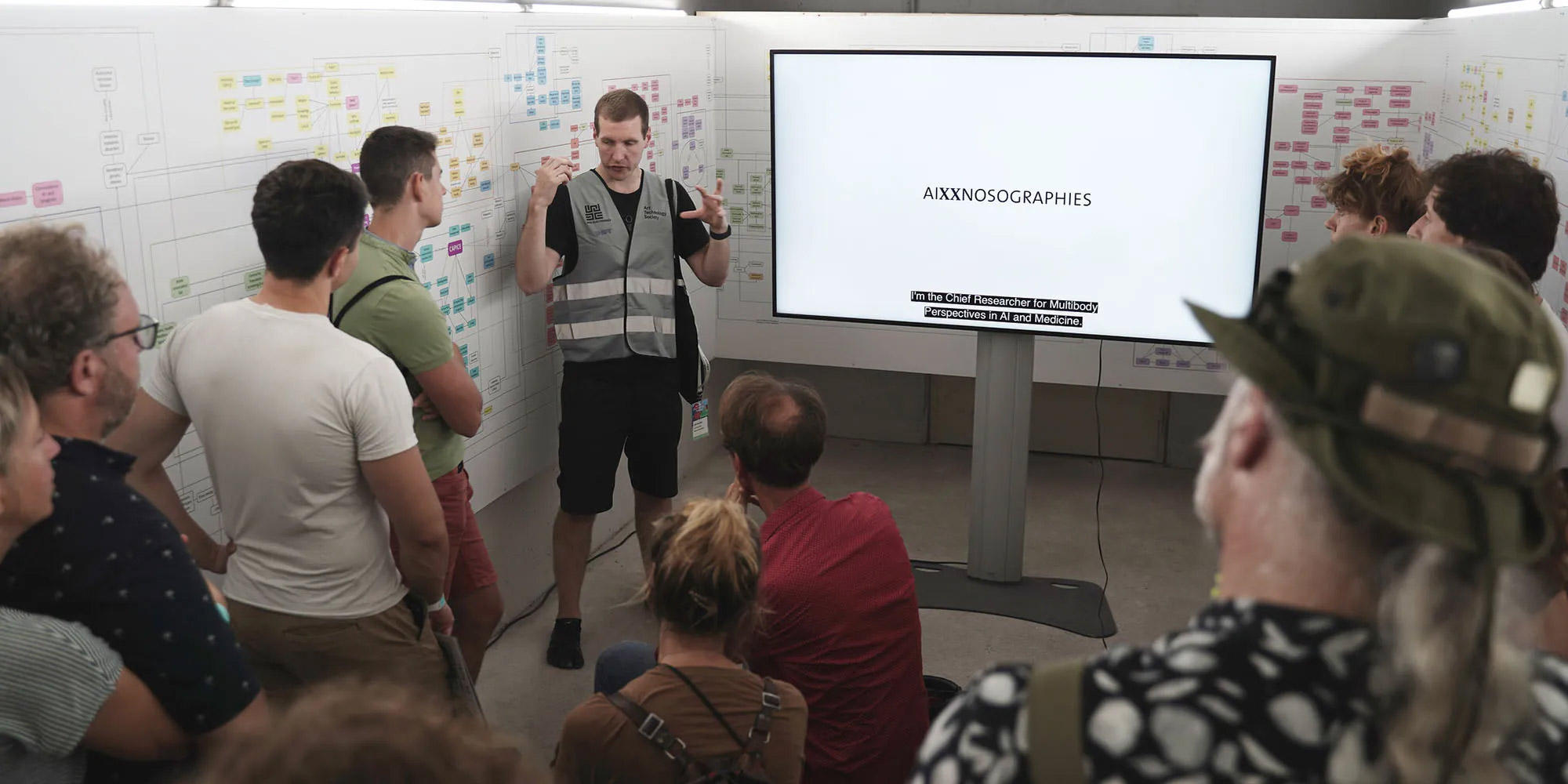


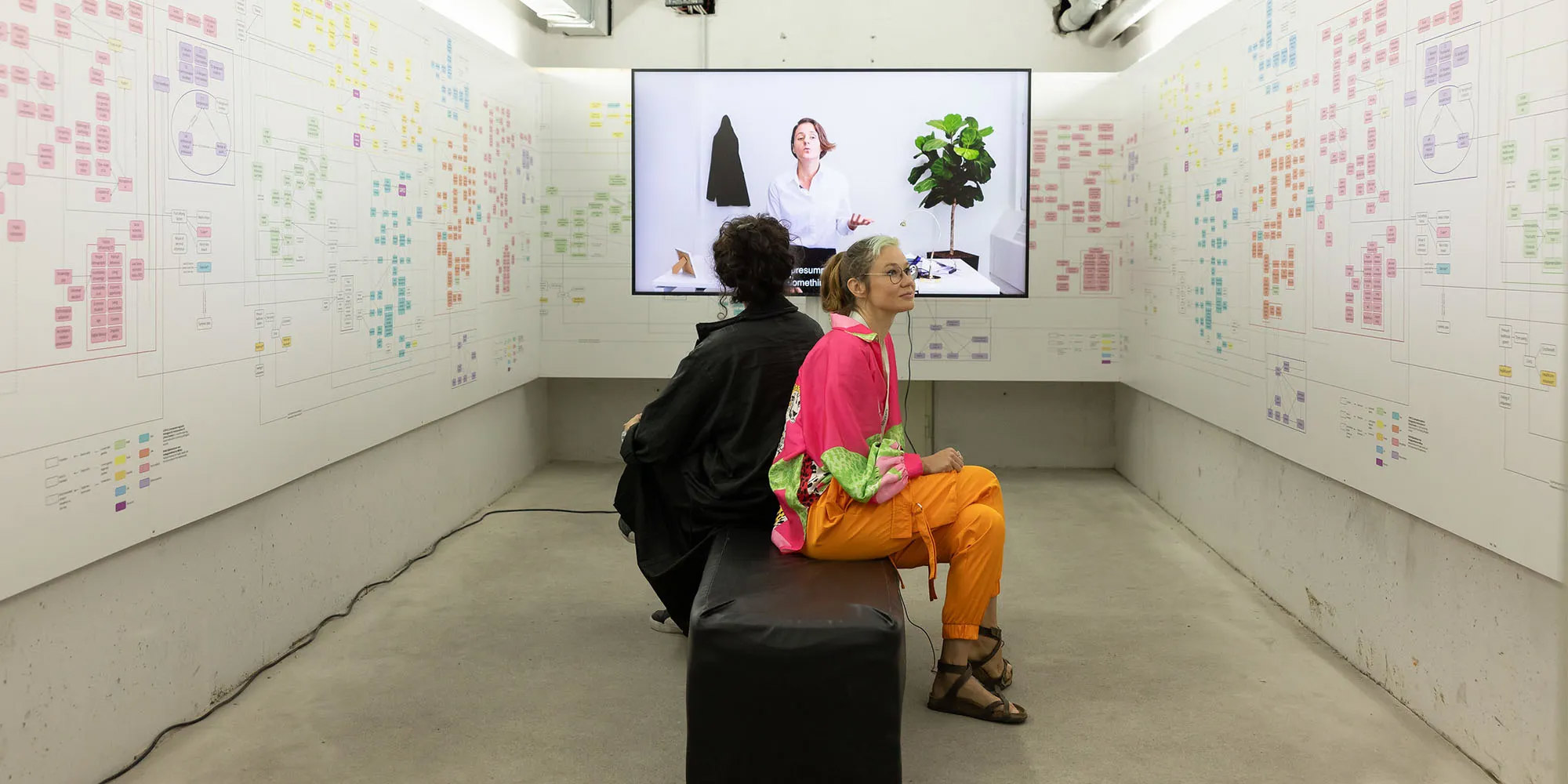

Together with her team, Špela used the outcomes of these the expeditions, interviews, observations and evaluations to work on the final art installation. Her collaborator and researcher Janita Chen tackled the ELSA-NN genetics use case with an actor-network theory inspired visual map. Reon Cordova, artist and researcher mapped the ELSA-NN synthetic data use case in the form of a 4-channel audio map. Finally, both data sets and the fieldnote reports from the participants of the performative ethnographies were provided material for a speculative film essay on the topic. The video work plays with speculative normalization through an interview with the Chief Researcher of Multibody Perspectives in AI and Medicine from an imagined EU medical regulatory body, through which the artist critically questions whose concerns, interests, and values will be taken into account during the near and widespread AI implementation in the field of healthcare and wellness.
Beside Špela’s artwork AIxxNOSOGRAPHIES in festival theme exhibition (Co)Owning More-than-Truth there was one more emperformative ethnography expedition at Ars Electronica, this time it was about heart. As a cardiologist Dr. Prof. Pürerfellner is the Head of Clinical Electrophysiology at the Ordensklinikum Linz Elisabethinen in Linz and the president of the European Heart Rhythm Association (EHRA) at the same time. Through that connection he is deeply involved in various research projects in Europe and MAESTRIA being one of those. So, he introduced us to Dr. Prof. Götte, Head of Cardiology at St. Vincenz-Krankenhaus in Paderborn Germany, who is investigating cardiac diseases and the potential of AI in predicting strokes.
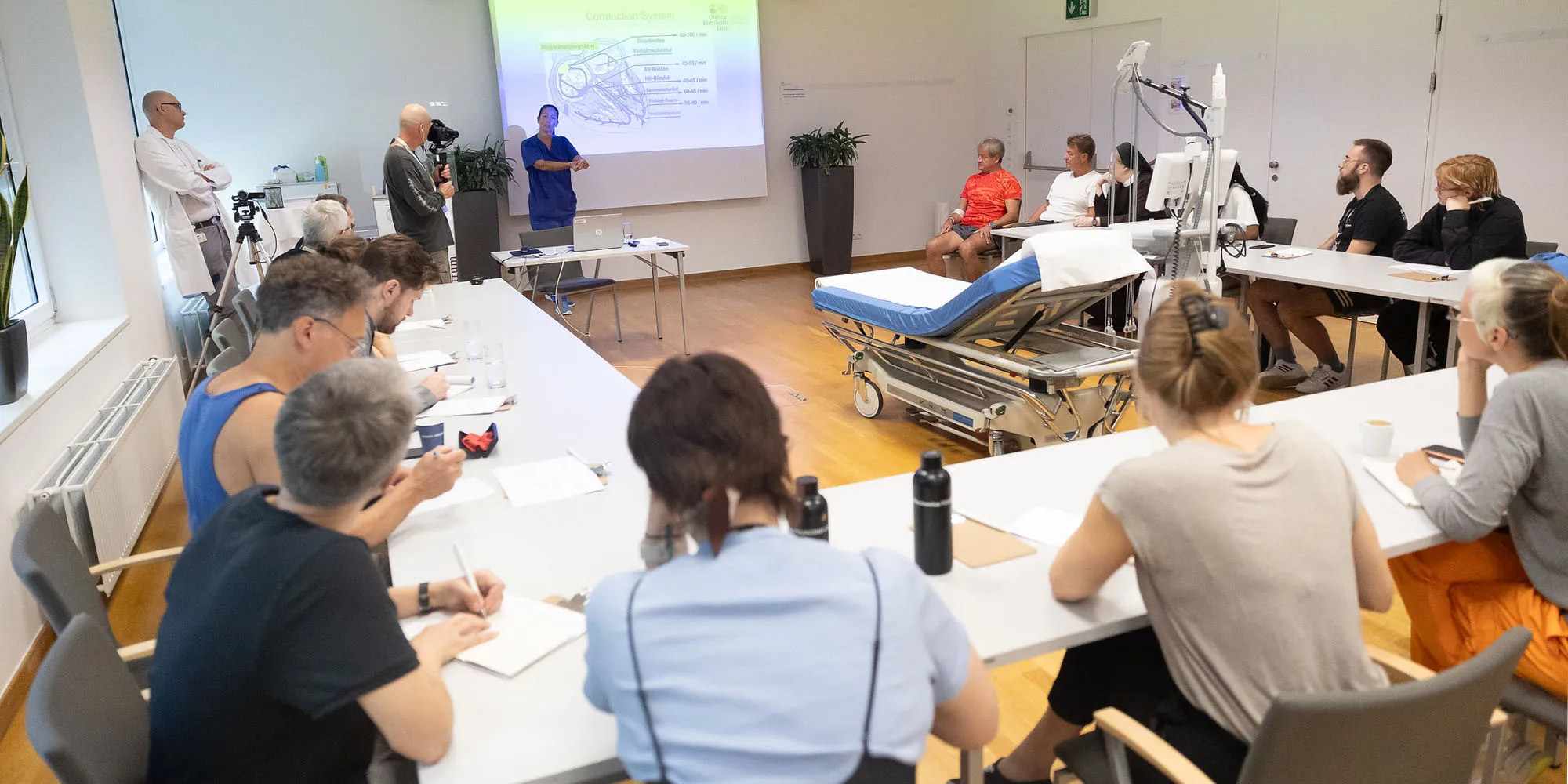

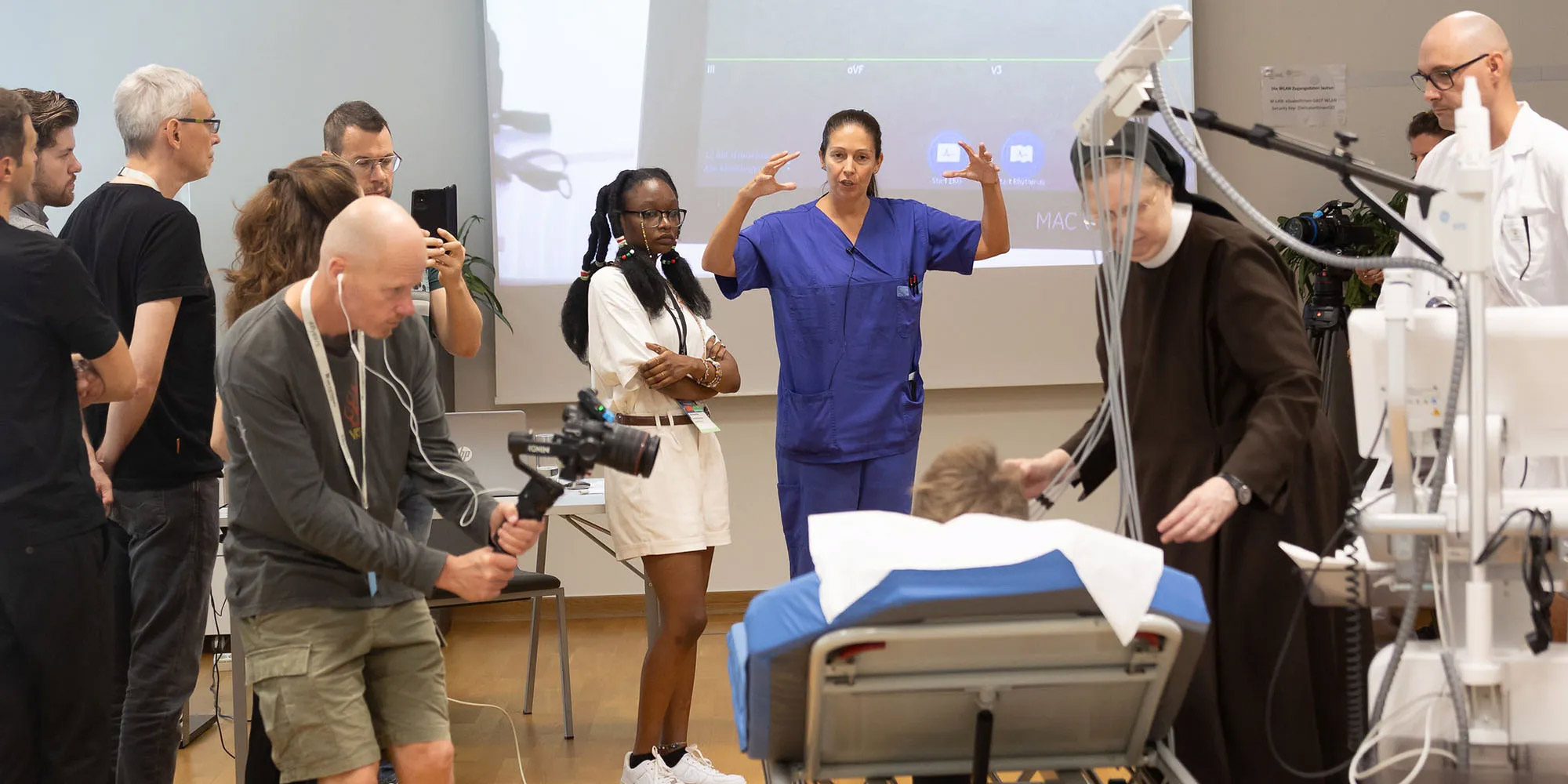
So, this time the participants of the performative ethnography first encountered a live ECG of a patient and healthy volunteer. Dr. Lemes and sister Ursula have a general introduction in heart rhythm diseases and explained what the machine detects and how it measures. Then Dr. Prof. Götte shared insights about where AI is already applied in the field of heart rhythm disease and where he sees the most potential for their research project MAESTRIA followed by a life stream into the operating room where Prof. Dr. Pürerfellner was performing a routine surgery for cardiac arrhythmia. This was followed by questions for the doctors and leading to a conversation about the impressions we all gained. Last but not least, the participants had time to phrase their thoughts and formalize an observation statement which was recorded and will be used for the next artwork iteration.
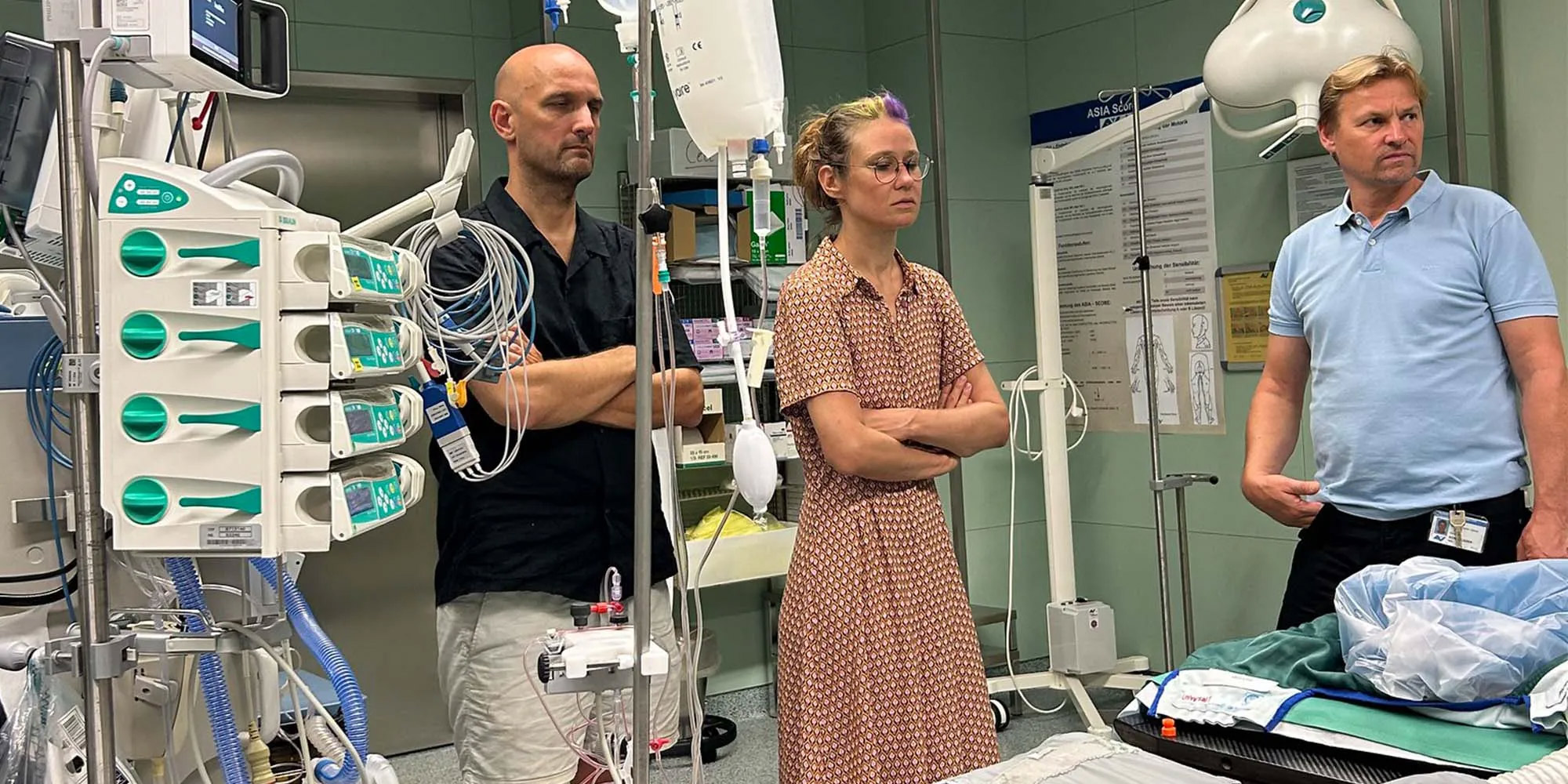

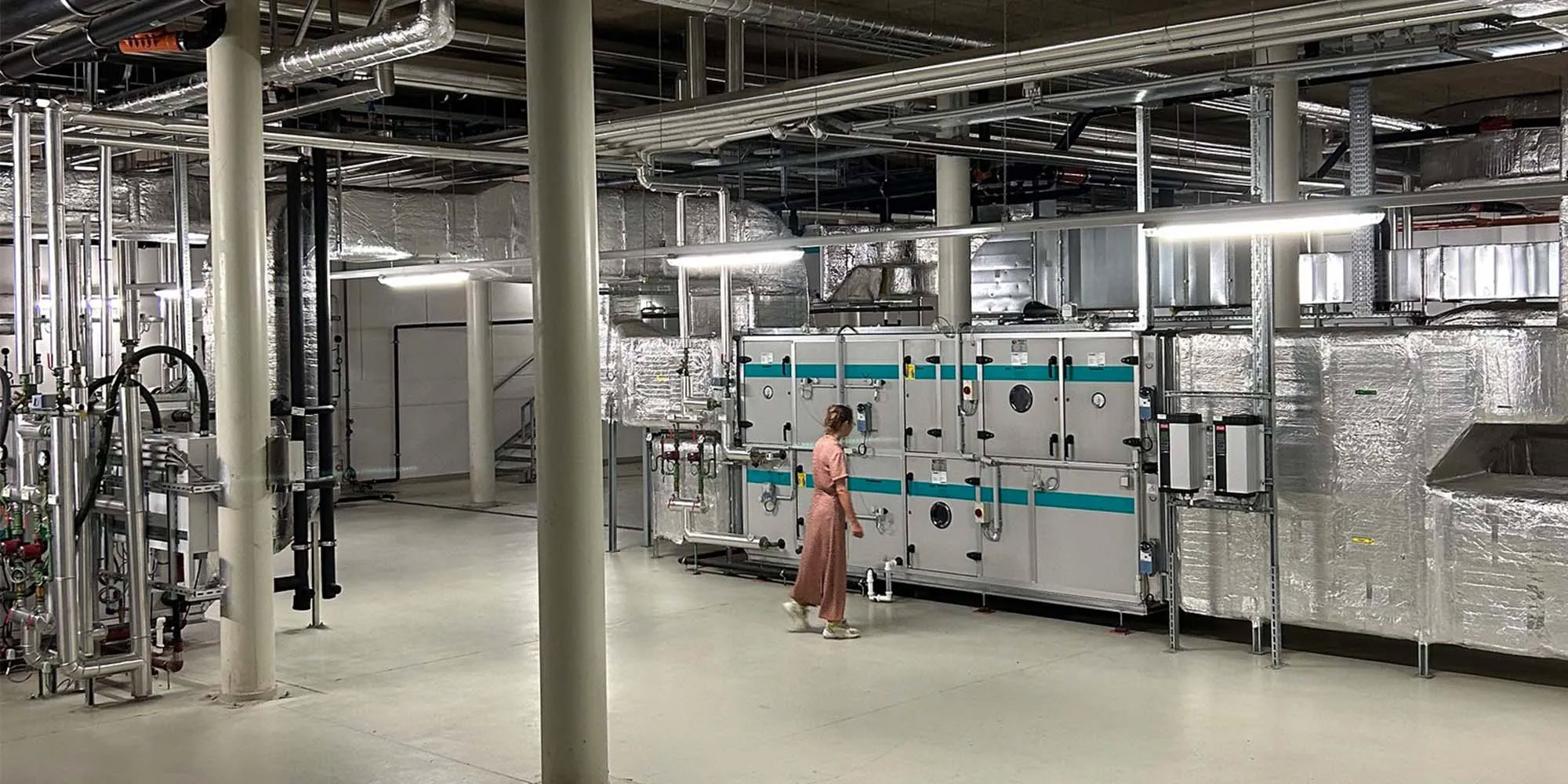
Within this ArtScience Residency enabled by ArtCollection Deutsche Telekom in 2023 Špela Petrič was able to tackle various crucial points of AI in the health care system and also utilize a wide range methodology: starting from artistic research, over mapping and video essay as well as audio maps and most importantly the work with the general public through the performative ethnographies. It feels like this is only the start of a far-reaching artistic exploration of the fundamental topic of AI in health care. Thanks to the support of the team behind the Art Collection Deutsche Telekom we were able to launch this idea with so much educational and awareness raising potential.
This artwork was developed during the ArtScience Residency, enabled by the partnership of Ars Electronica and Deutsche Telekom and with the support of the Sustainable AI Lab of the University Bonn.
